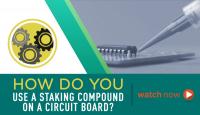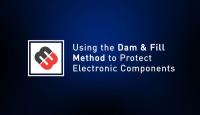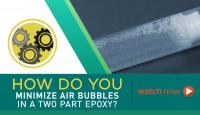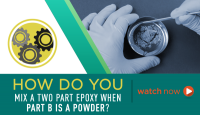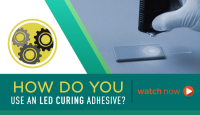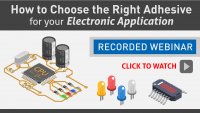See how to properly apply a staking compound to an electronic component for enhanced mechanical reinforcement. Learn how to apply the material on components of differing sizes and shapes as well as what material works best for this type of application.
Master Bond’s video library presents engineers with an extensive variety of videos that cover topics ranging from packaging to product highlights, from "how-to" demonstrations to best practices for using epoxies, and more. Browse through our library for a look at what Master Bond has to offer.
Get an up close look at how the dam and fill process works to protect electronic components on a circuit board. This two step method utilizes a damming compound such as Supreme 3HTND-2DM-1 to create a barrier around the component, while the flowable filler material, EP3UF-1, covers the component for protection.
Learn how to minimize the development of bubbles when mixing a two part epoxy system and how to most effectively remove bubbles if they are already present in your mixed material.
Watch this demonstration to learn the step by step process of mixing a two part epoxy system, where Part A is a liquid and Part B is a powder. Epoxy system EP126 was used in this video.
LED curable adhesive systems offer safe and rapid cures upon exposure to an LED light source. Learn how to properly apply and cure an LED curable adhesive system using a portable LED light source in this demonstration video.
Watch this webinar for a practical discussion on choosing an adhesive, coating or potting compound for challenging electronic applications. Learn how to navigate the selection process while keeping in mind service conditions, desired properties and processing constraints.

